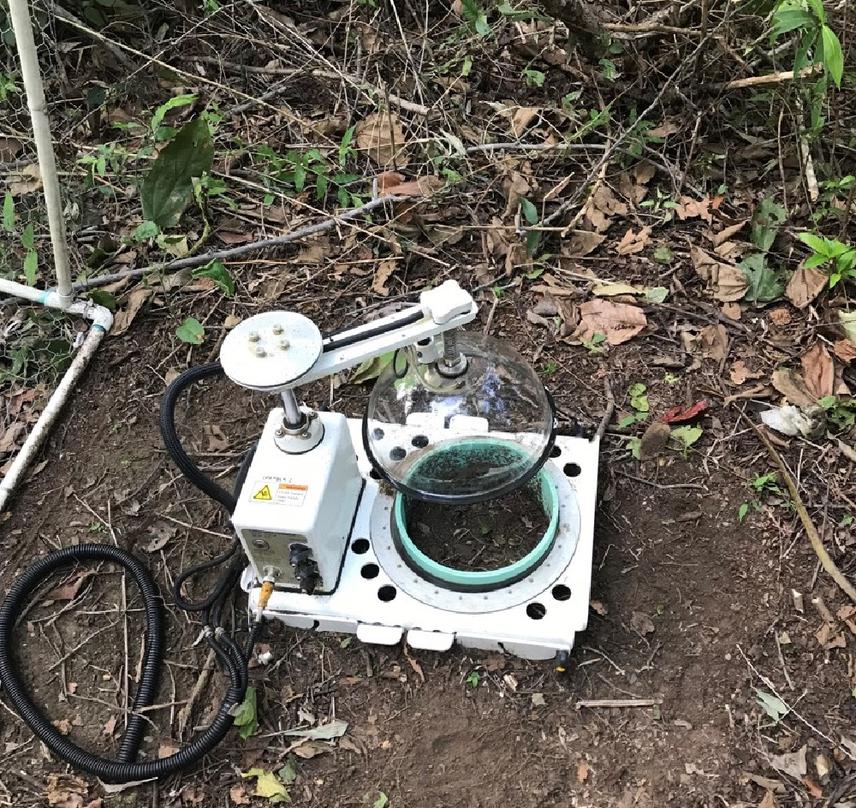Sofia Calvo Rodriguez
Tropical Dry Forests are among the most endangered ecosystems in America; despite their great sensitivity to climate change and importance for ecosystem services, there is little information about greenhouse gas emissions from soils and how these are affected by climate change. Studies have shown that increasing temperatures cause a net release of carbon dioxide from soils and increasing temperature and concentrations of atmospheric carbon dioxide (CO2) can also stimulate soil emissions of nitrous oxide (N2O) and methane (CH4). Small changes in ecosystem temperature, precipitation, and productivity, due to global warming or other disturbances, can cause an ecosystem to switch from being a sink to a source of greenhouse gases.
Our study is located in the Tropical Dry Forest of Costa Rica in Santa Rosa National Park. The main objective of our study is to identify spatial and seasonal variations of CO2, N2O, and CH4 emissions, and study the relationship between these trace gas fluxes and biotic and abiotic environmental factors controlling soil emissions.

We will collect soil flux measurements at different stages of forest succession. Permanent plots have been previously established in the park in a firebreak, an early forest succession, and an advanced forest succession. Manual soil flux chambers and automatic flux chambers will be used to measure the CO2, N2O and CH4 gas exchanges and soil respiration. Collection of data will begin in the dry season (April-May) and extend to the transition months from dry season conditions to wet conditions (May-June) to the peak of the rainy season in October 2018.
For the data sampling of environmental conditions (abiotic), sensor networks have been previously deployed at each site equipped with soil moisture and temperature sensors. Other environmental conditions such as precipitation, air temperature, and humidity are monitored from meteorological towers located at each site. For the biotic environmental conditions, soil samples will be collected as well as litter samples in the same place manual chambers will be installed to determine the microbial biomass and activity.
Through this study, we intend to identify seasonal variations on soil emissions, and the relationships between trace gas fluxes from soils and biotic and abiotic environmental factors controlling these soil emissions as well as differences between successional stages.